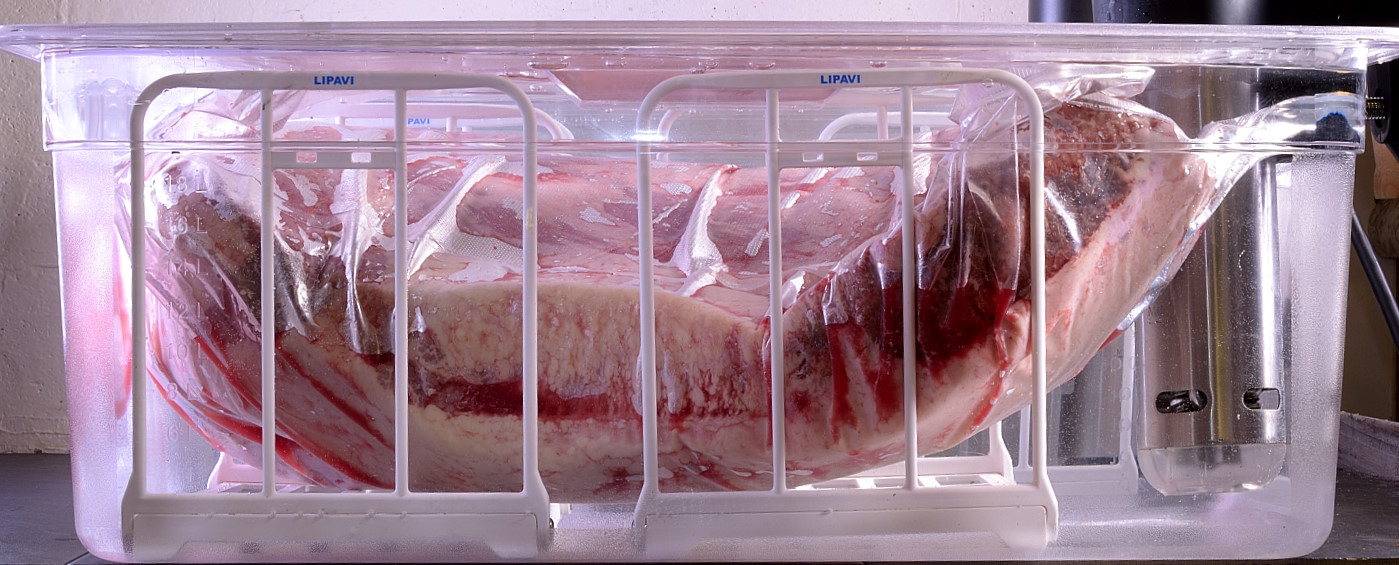 Above: Lipavi C20 container, N20 polycarbonate rack. Lipavi C20L lid.
Above: Lipavi C20 container, N20 polycarbonate rack. Lipavi C20L lid.

The whole brisket, approximately 14 lbs/6 Kg. The point is to the left, the flat to the right.

Above: the 3 lb/1.5 Kg section closest to the flat. As the muscle continues to the right, the fat content slowly increases and the outer pectoral muscle comes into play.
Serves 4-6
Level of difficulty: 2.5
Procedure:
Preheat the water in your sous vide bath to 132 F/55 C.
Processing
Vacuum seal the section of brisket in heat rated plastic bags. Process for 60 hours to fully tenderize/pasteurize. Cold shock the sealed package in iced water until it achieves 70 F/21 C. Refrigerate at 40 F/4 C. Pasteurization will be preserved as long as the seal is not broken. The roast can remain safely refrigerated in this state for at least two weeks.

Remove the package from the refrigerator. Submerge the sealed package in hot tap water 110 F/43 C or a sous vide bath above 130 F/54 C until the gel/juices melt.

Remove the roast from the bag and harvest the juices into a microwaveable container or small sauce pan.
Clarifying the Sous-Jus:
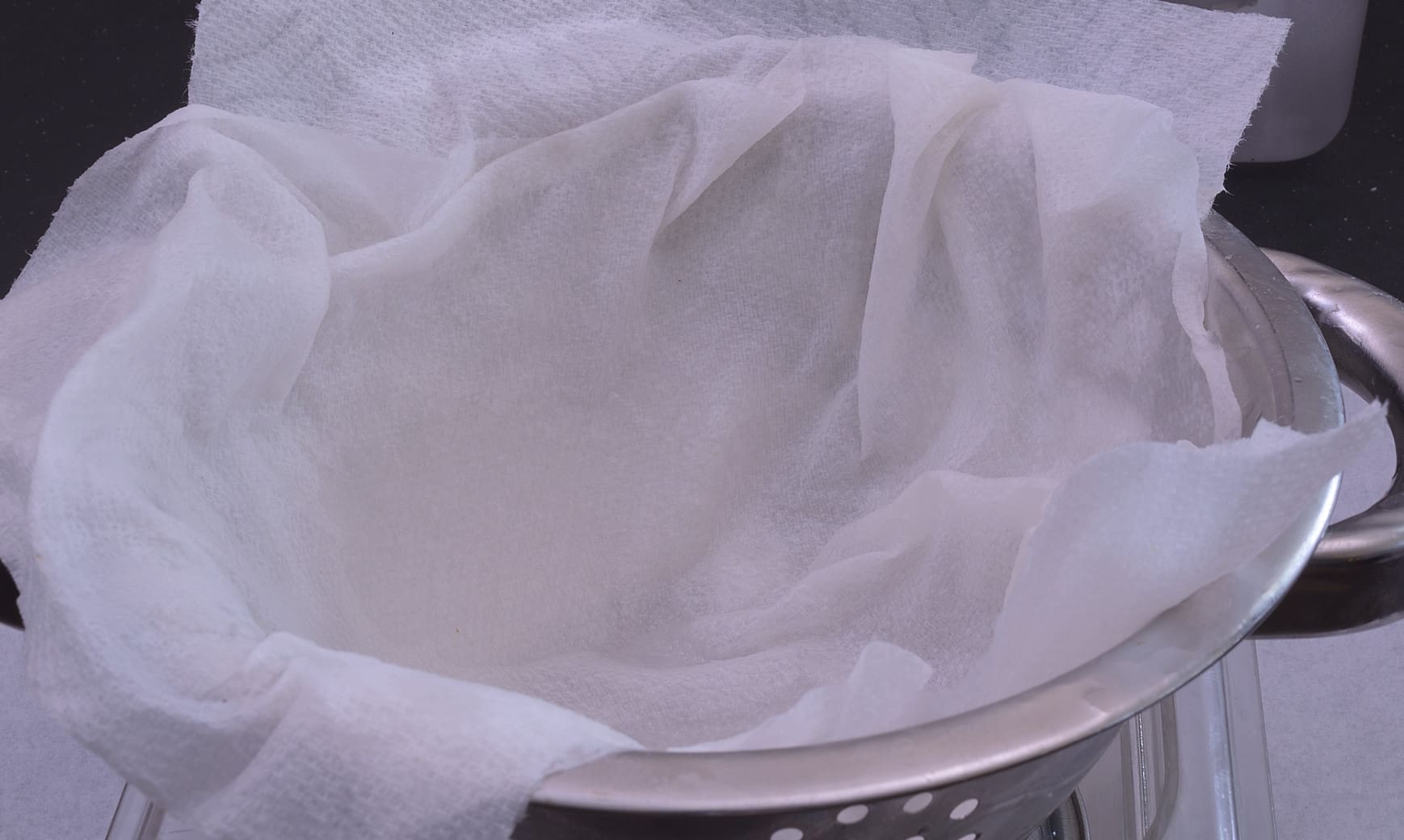
Place a small colander above a container and line with moistened paper towels. Moistening the paper towels prevents the juices from clinging to the fabric.
Note: I have adopted the practice of dissolving about a teaspoon of the powdered egg white in 1 ounce of water and adding it to the unprocessed Sous-Jus. This helps the albumins already present in the juice to collect the impurities as the juices are heated, assuring a perfectly clarified result every time.
Bring the juices to a boil–it takes approximately 1 minute in a microwave oven. Take care not to allow the liquid to boil over. A small sauce pan can also be used to bring the juices to a boil. I don’t hate washing dirty pots and pans, but I do not seek the opportunity to accumulate them either.
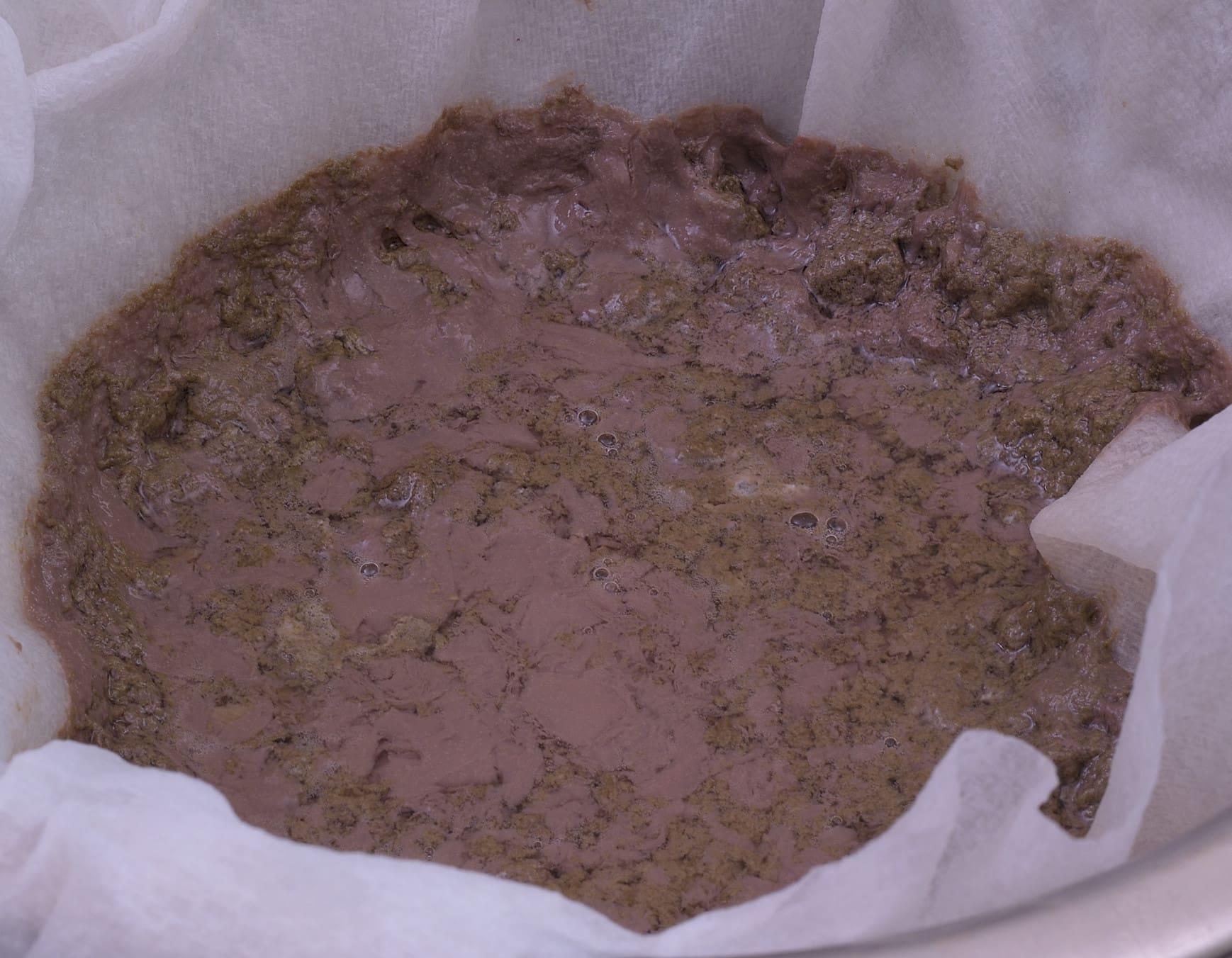
Pour the juices into the moistened paper towels.
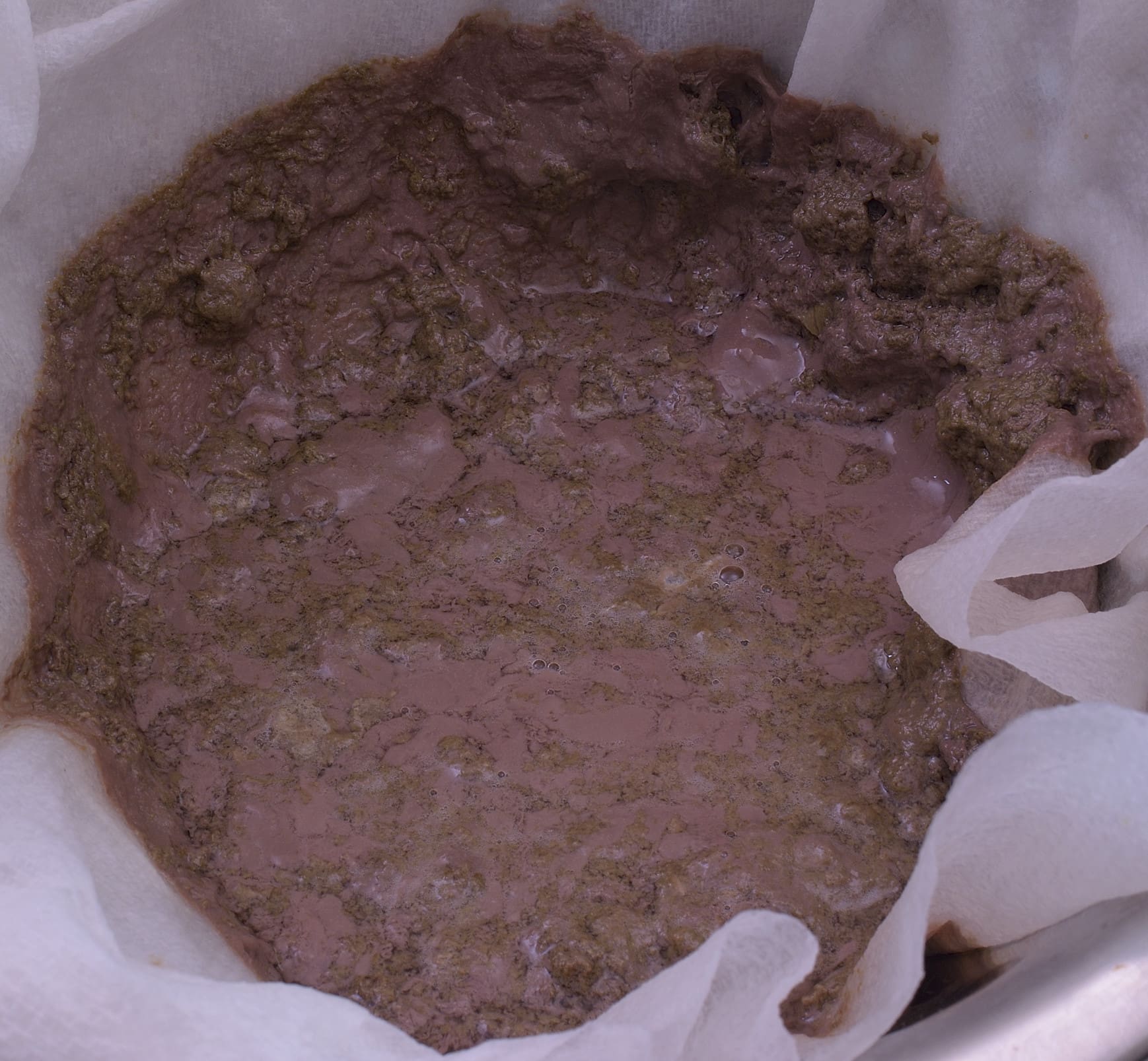
The fabric traps the “off” smelling/tasting denatured myoglobin and albumins. After the filtering process is completed, discard the paper towels and the sludge. Some people tell me they feed this to their pets, but I do not advocate the practice.

Now we have a rich, clarified consommé to put the finishing touch on our “Smoked Brisket au jus.” A pinch of salt is all that is really required, although I might add a few drops of glace de viande to darken the broth.
Caution: I advise against adding salt (or anything else) to the sous vide pouch in advance of processing. If salt IS introduced into the pouch, the consommé will be quite salty. Salt does penetrate the surface of land/air dwelling proteins, but very very slowly. In sous vide, even with 48 hours of marination, there will be a lot more salt in the juices than there will be in the meat. Some people assert that sous vide temperatures accelerate the rate of penetration, but I have been unable to confirm this in real time.
At 40 F/4 C, the natural “curing” process caused by the presence of salt(s) causes chemical reactions in the meat. Using salt to marinate proteins for MORE than 48 hours can cause the flavor and texture of proteins to exhibit characteristics more akin to corned beef or ham.

Stage the roast onto a sheet pan lined with parchment. Pat dry with paper towels.
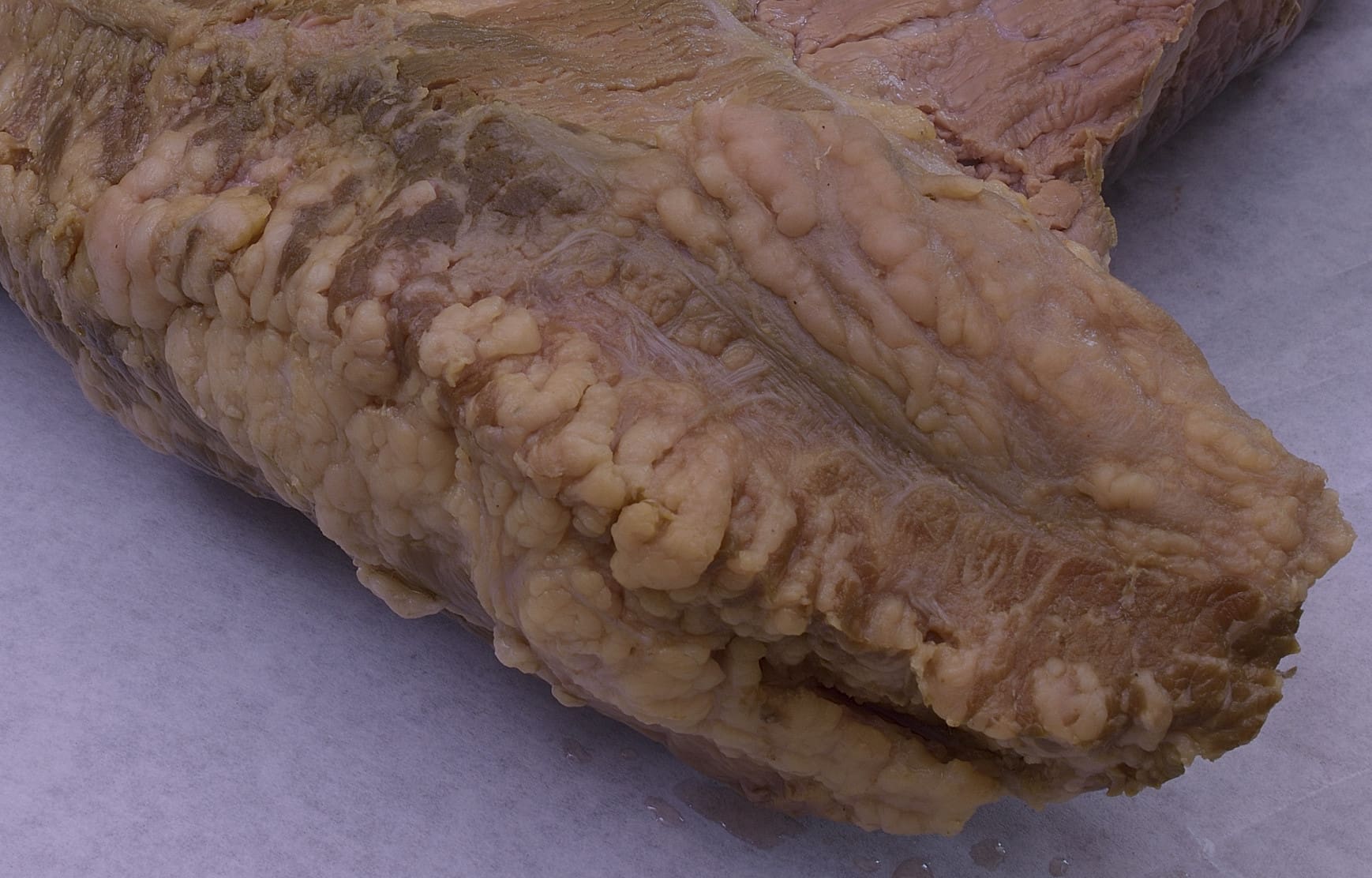
Above: for those who are interested, this is where the outer pectoral connects to the animal’s sternum.
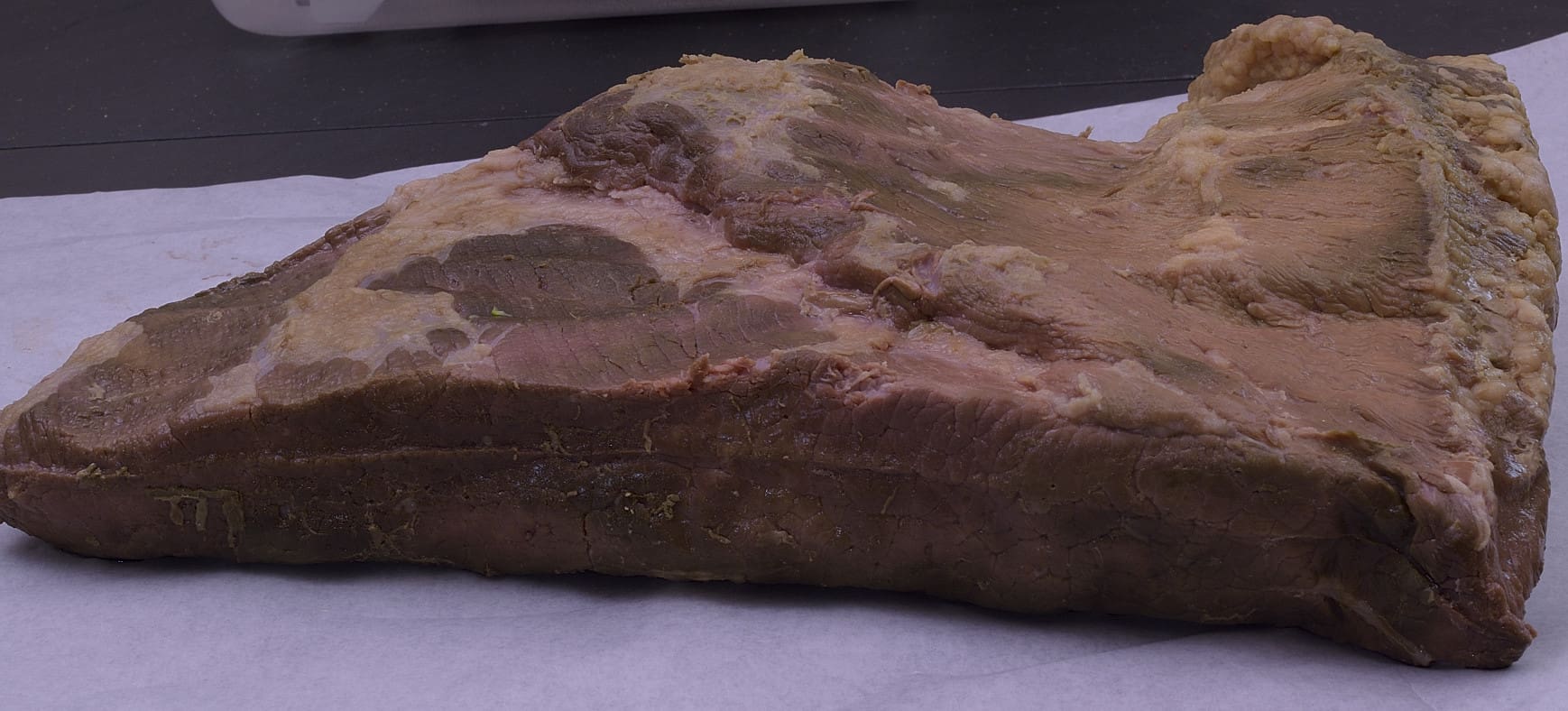
The picture above shows the profile of the inner pectoral (flat). The ridge on the top that goes from the front right towards the back left is where the outer pectoral begins, proceeding towards the sternum pictured above.
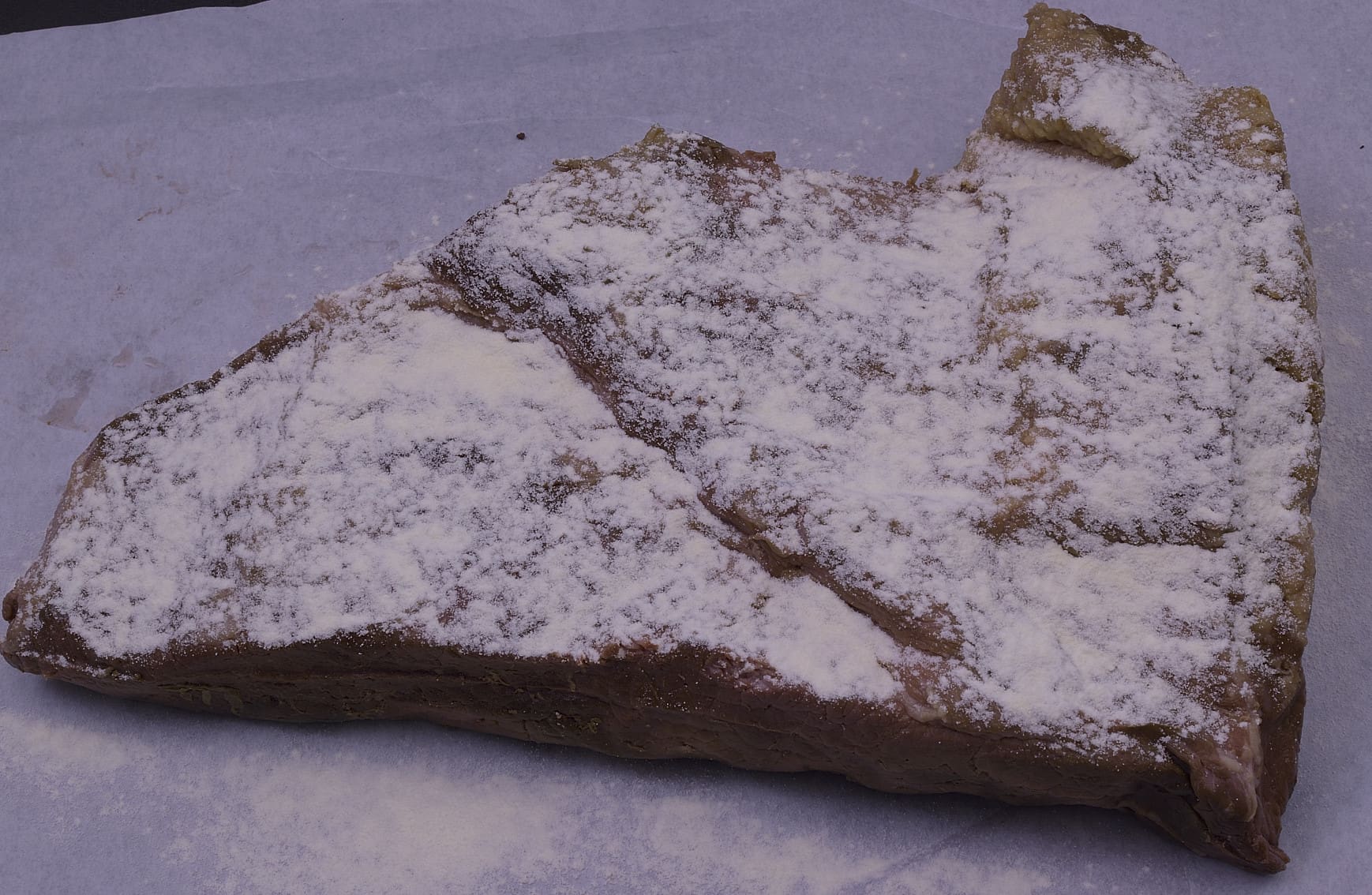
Use a dredge/shaker (or sifter) to dust with powdered egg white (or brush with well beaten liquid egg whites). This will create a sticky surface for seasonings to cling to. For people who are allergic to egg products, powdered buttermilk or even flour can be substituted. Note: Egg whites coagulate when exposed to heat but buttermilk does NOT. Exposing a buttermilk based crust to direct heat from the surface of a pan may remove the coating instead of securing it.
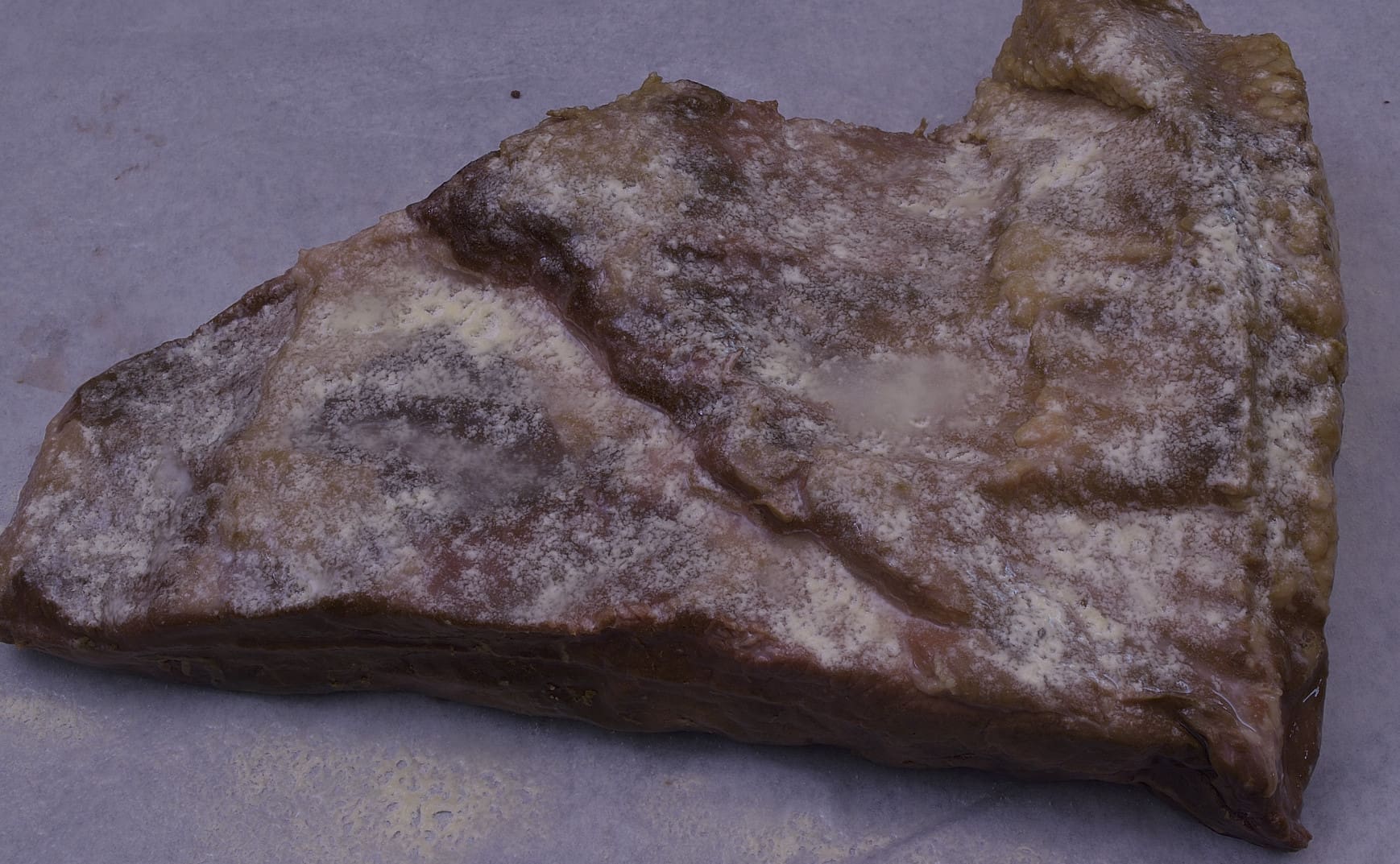
Mist the surface with a spray bottle to dissolve the egg whites.

Sprinkle with your favorite rub/seasoning or use one of ours linked HERE.
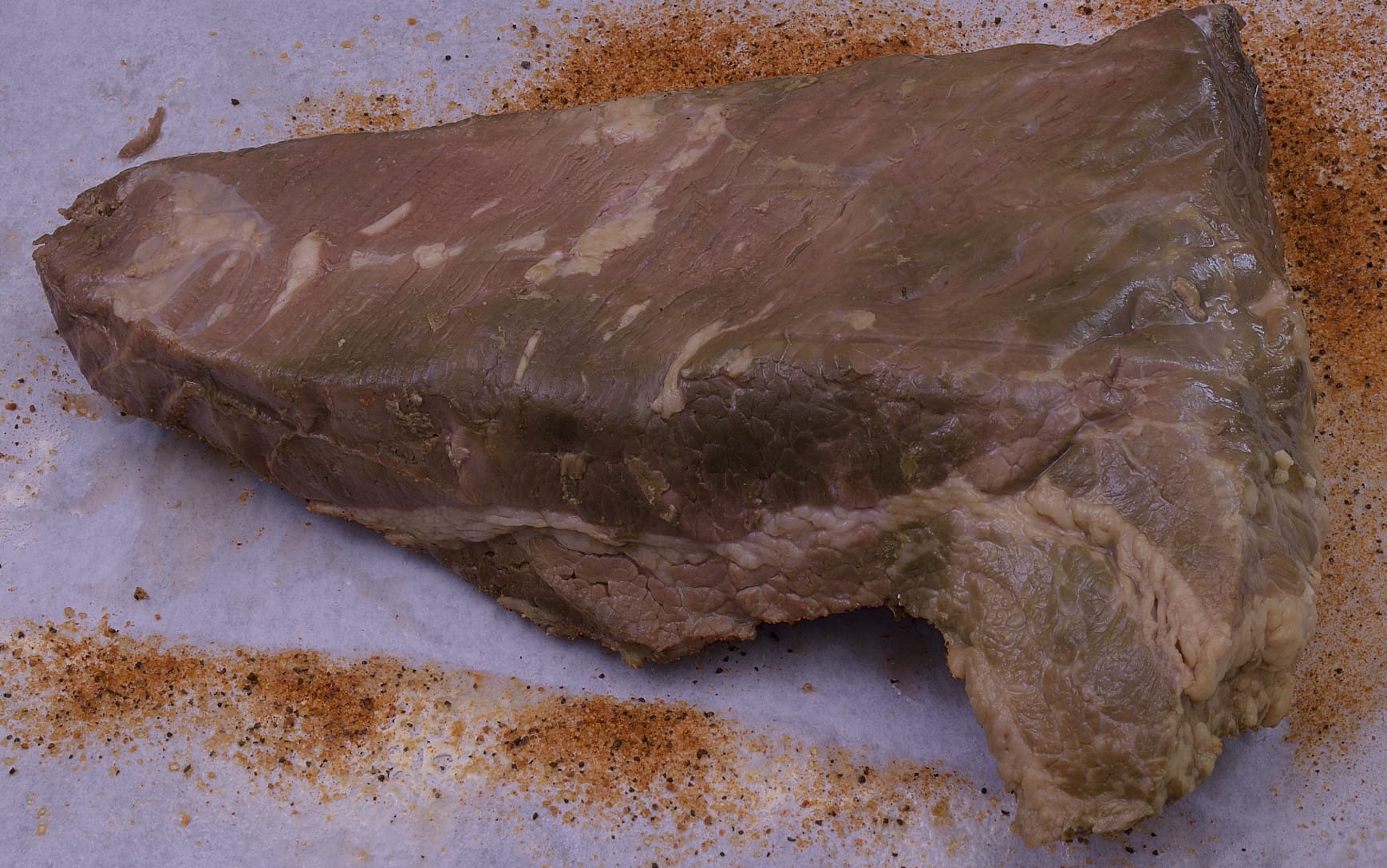
Turn the roast over and…
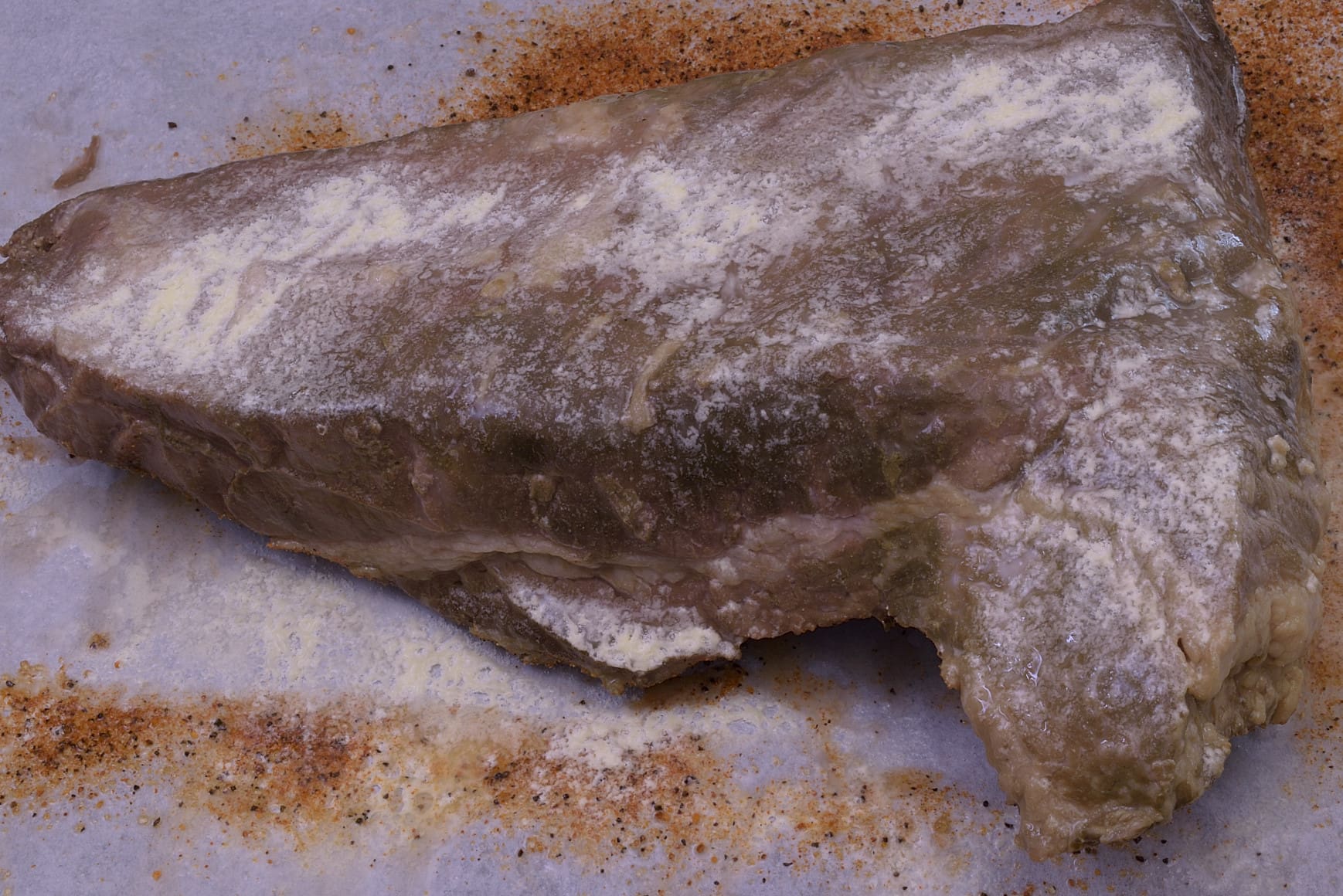
repeat the egg white/mist/seasoning process.
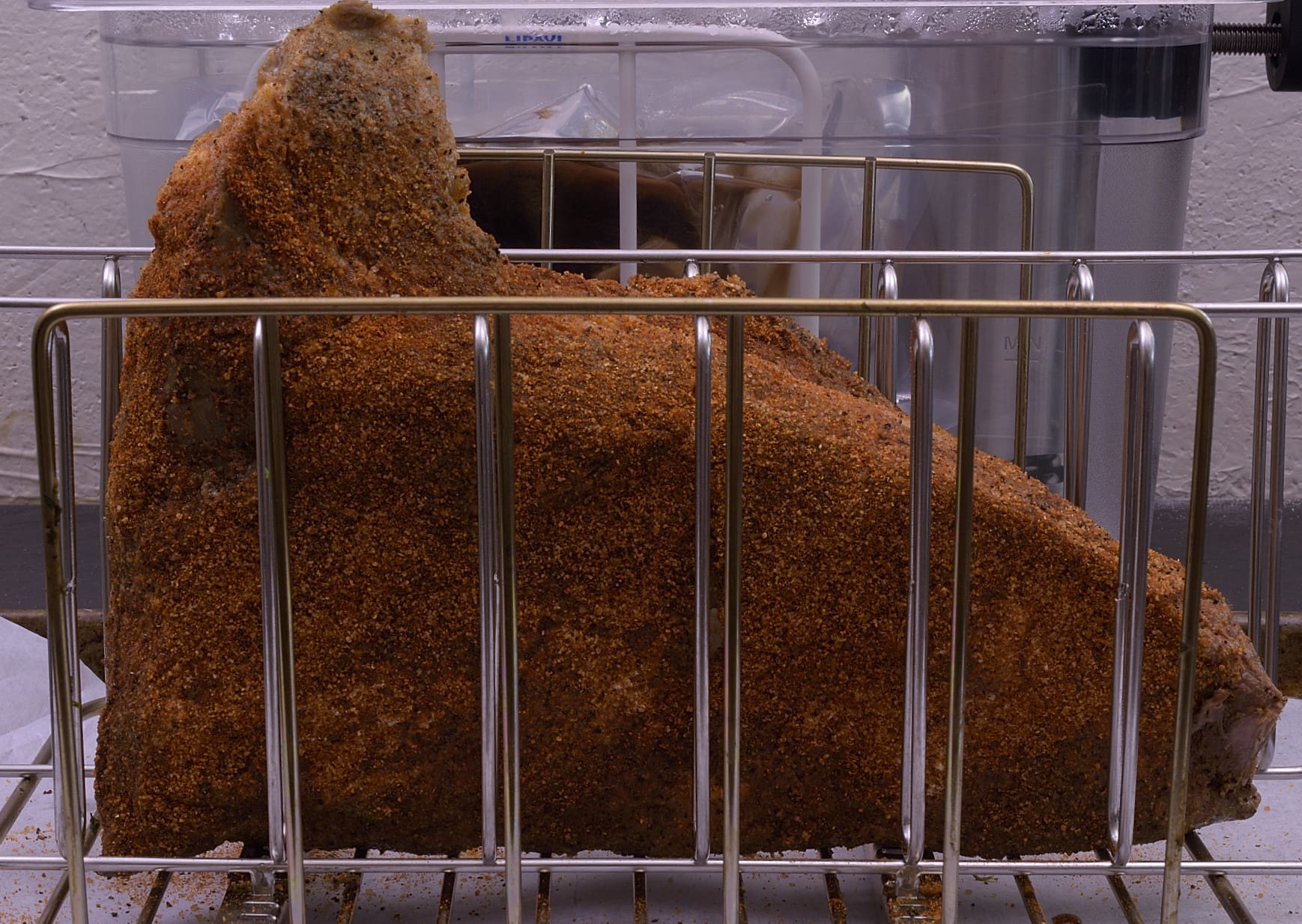
I like to stage the roast upright into a Lipavi metal rack.
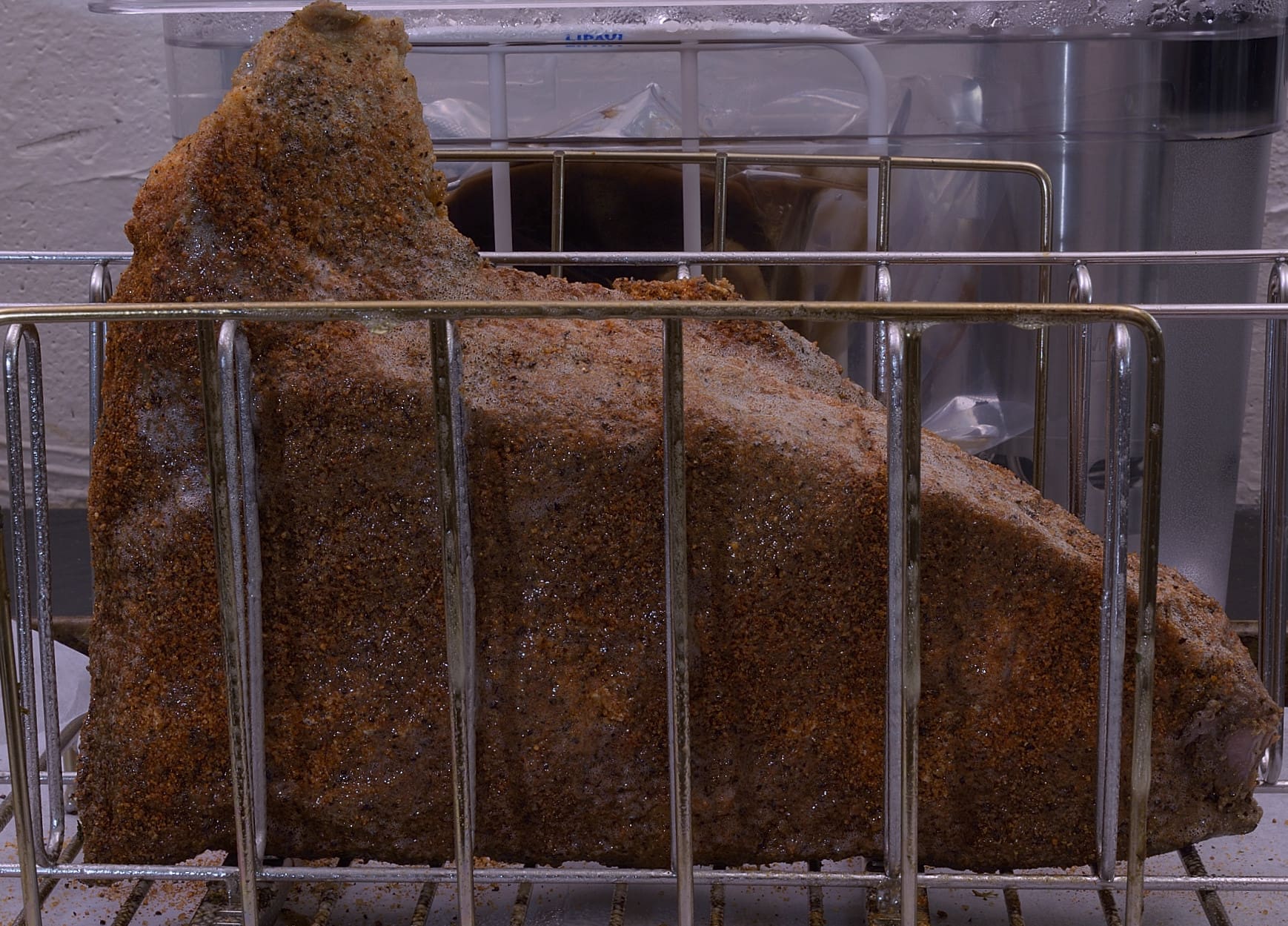
Mist with spray release (PAM, etc.). Stage the brisket into a pellet grill set to 180 F/82 C. Smoke until the internal temperature reaches at least 130 F/54 C–usually 2+ hours, although this roast spent 4 hours in the barrel. The lower the temperature, the more smoke flavor will be applied. The longer the brisket stays in the smoker, the “smokier” it will get. The longer the brisket stays in the smoker, the more moisture will be lost. There is no way around it.
Service
Examination of both sides of the roast will reveal the grain running through each of the two muscles. One need only “split the difference” to make sure you are cutting both the upper and lower sections properly.

Cut the roast in half to reveal your success!
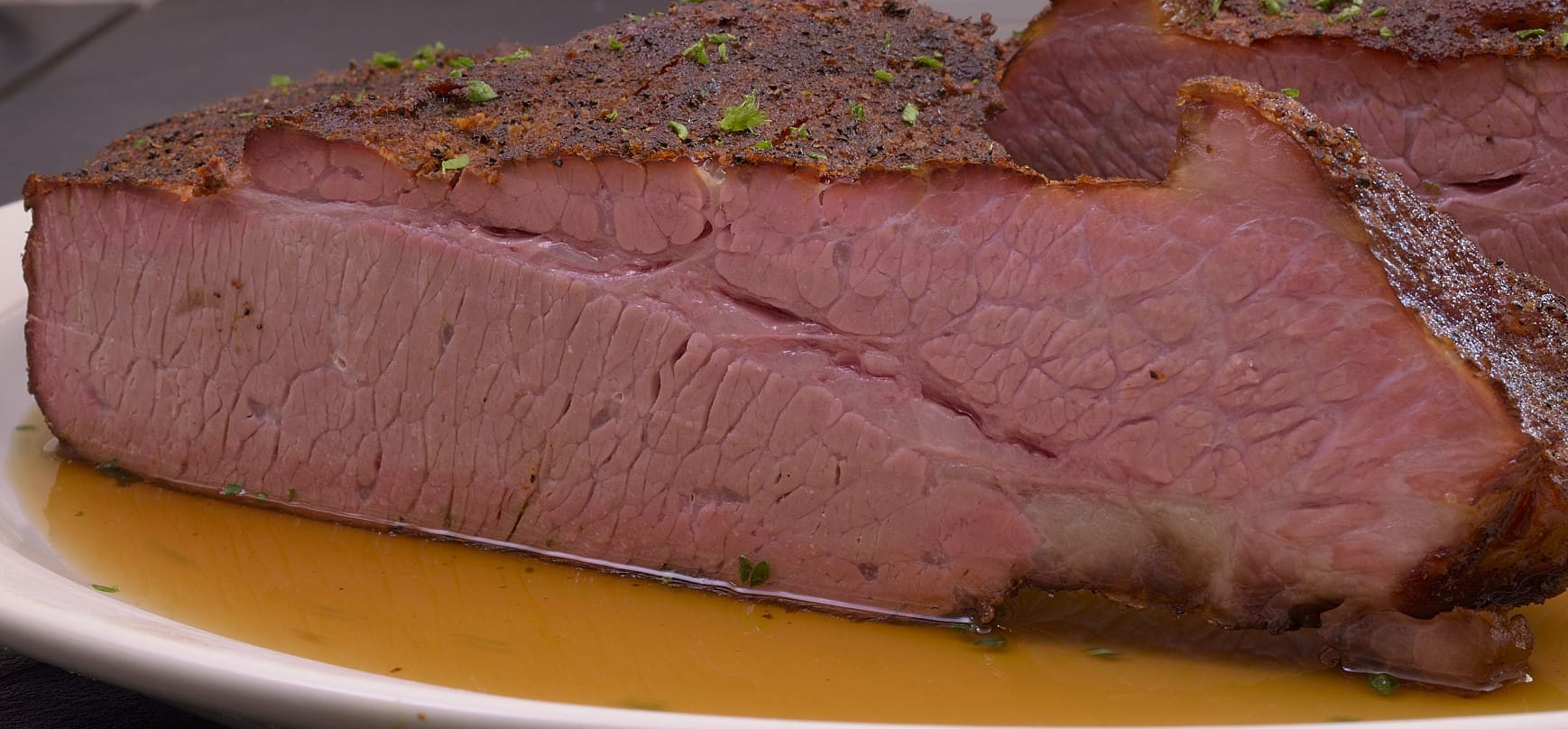
The outer pectoral (point) is the section to the upper right with the distinctive circular/cellular grain. The extended section of the flat is below to the left.
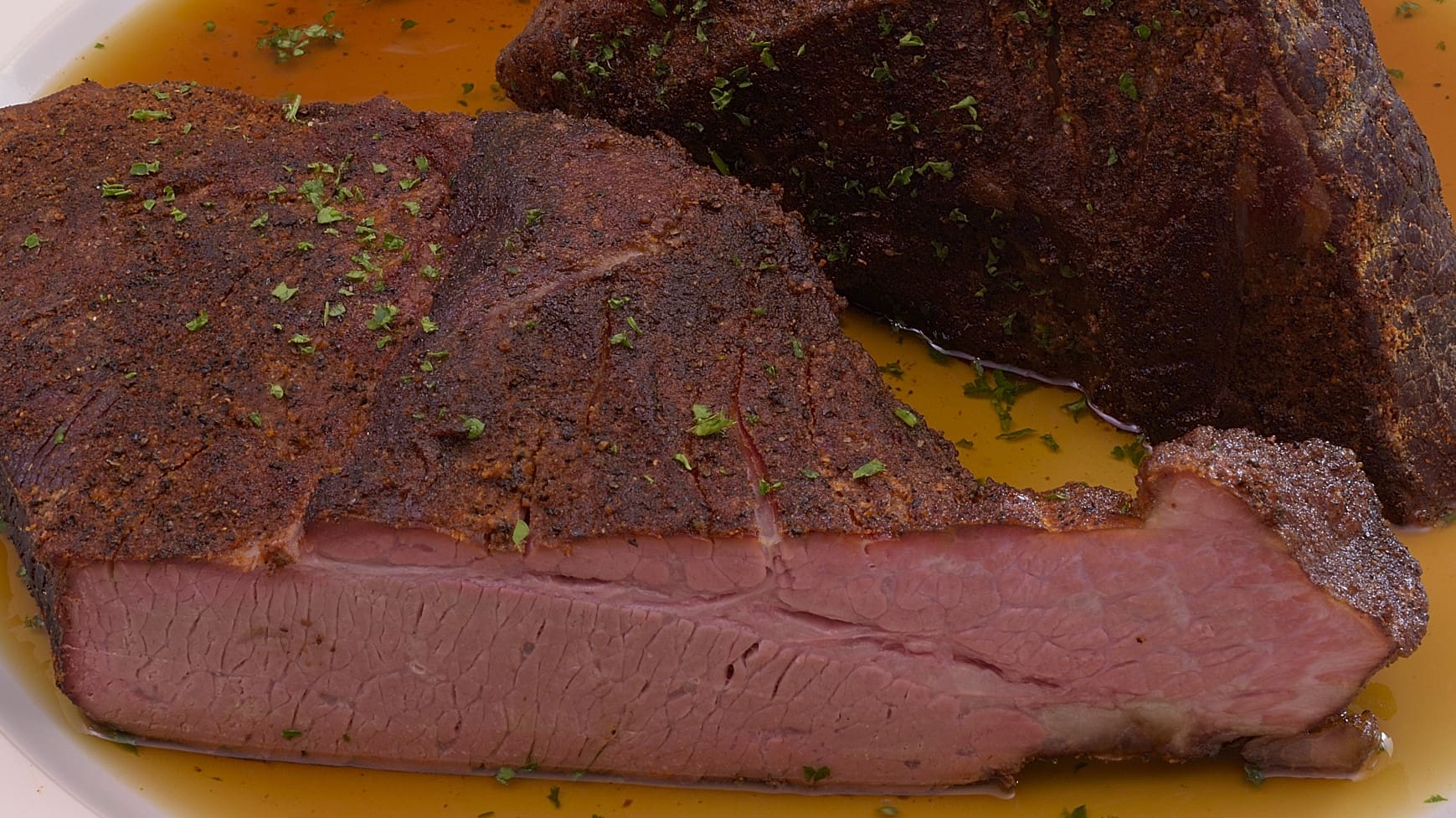
The 4 hour, low temperature smoking model did a good job of minimizing the layer of fat that separates the two muscles…

without scorching the exterior.

It was always customary to slice the roast “as thin as possible” to compensate for a certain amount of chewiness that was heretofore considered inherent and inevitable. Thanks to sous vide, it is no longer necessary to anticipate even the least bit of “chewiness.”

The “smoke ring” is evident, albeit a wee bit faint. Once considered requisite to score well in competitions, the concession was finally made that this effect is not the result of smoke penetration. The “smoky” ring is actually a form of lividity caused by the exposure of myoglobin to carbon monoxide and nitrogen oxide–the result of incomplete combustion of wood based fuel.

A simple, rustic salad adds vitality without violating low-carb Atkins-compliance for those who observe such disciplines.

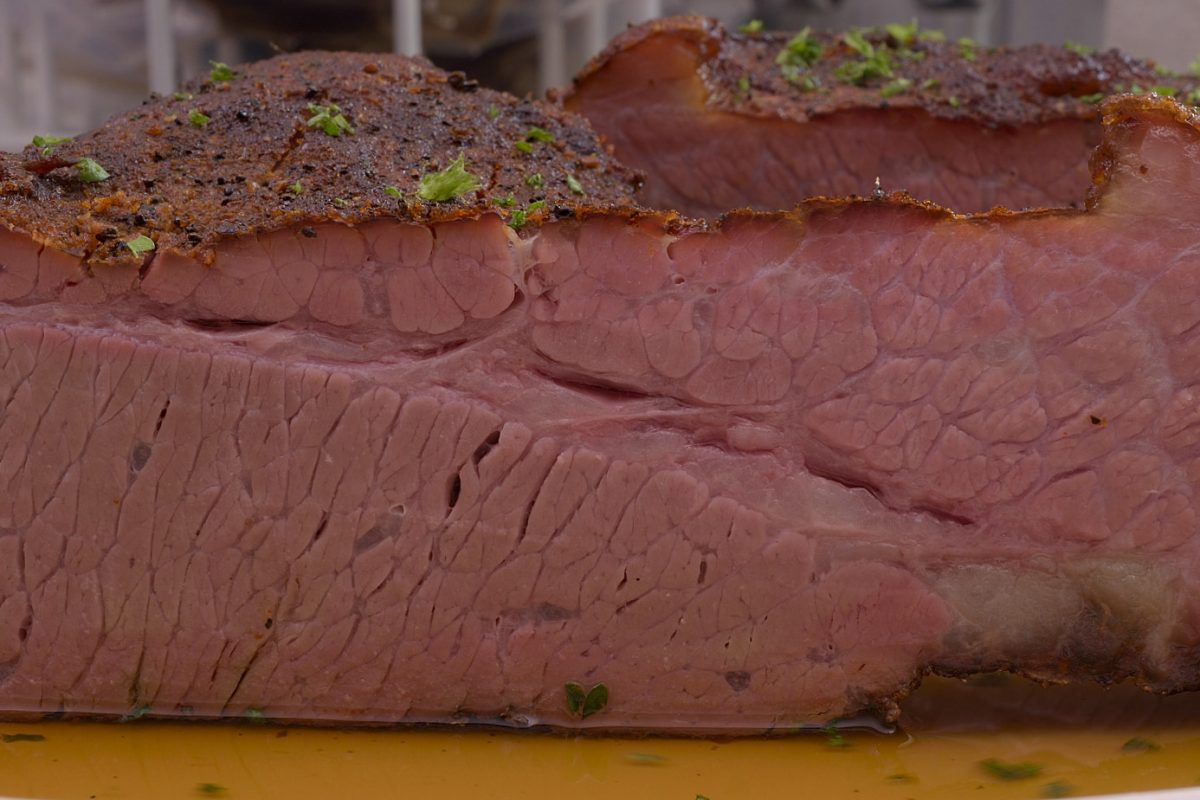
1